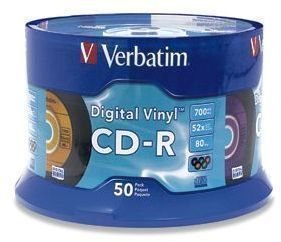What's the Difference Between CD and DVD for Use in a DVD Player?
Burning Home Media
If you are burning a video onto a disc with your computer, depending on what software you are using there will be an option to burn the video onto a CD or DVD. Most people these days use a DVD, but you can also burn onto a CD in what is called a Video CD (VCD) format. In this article, I’ll discuss the differences between the two formats and you’ll see why VCD never got to be that popular in the United States.
Video CD or VCD
A Video CD is just as the name describes – video stored on a CD. The problem with VCD formats is that a CD can only hold up to 700 megabytes of data. A DVD can hold more than seven times that much. As a result, Video CD’s have a much lower video quality than what you will find on a DVD. They are still great for older home videos or even cell phone video, but for actual movie watching I think most people will be turned off by the way the picture looks.
By comparison, the VCD format has a quality much like that of a VHS tape you’d watch in a VCR. It uses MPEG compression for both the audio and video, and does not support widescreen aspect ratios, though you can still encode wide video using black bars at the top and bottom. One main benefit that VCD has over VHS is that a CD won’t wear out after multiple viewings like the tape in a VHS cassette will.
Digital Video Disc or DVD

DVD has been the media of choice in the United States for nearly a decade. The transition from VHS to DVD went pretty quickly since DVD video and sound quality was so far superior to VHS. The DVD format also included various improvements like multiple audio tracks, subtitles you could turn on or off, and the addition of special bonus features like ‘Making Of’ documentaries, interviews with the cast and crew, and more. You got a lot more for your money with a DVD.
DVD video is stored using MPEG-2 compression, and the audio can be stored in up to 6.1 channel DTS surround sound or regular Dolby Surround format. The video resolution on a DVD is twice that of a VHS cassette, which is why there is such a noticeable improvement in picture quality. The rise in popularity with home theater systems can be attributed to the popularity of DVD players, because for a minimal investment you can mimic the same sound and picture quality in your living room as you could at a movie theater.
CD vs. DVD Video Formats

When CD and DVD burners first came onto the market, there was a pretty substantial price difference between a blank CD and a blank DVD. Now you can buy spindles of blank discs for pennies apiece, so the cost of burning a DVD has greatly diminished. I think the low material prices combined with the much more desirable high quality video offered by DVD is why the Video CD never took off in the United States. By the time CD burners became standard equipment in home computers, the DVD format was already gaining popularity.
According to the Wikipedia, the Video CD format is most popular in parts of Asia and India because it is a cheaper and easier to use format when compared to DVD. These areas are also widely known for rampant media piracy and a lot of the bootleg movies sold by street vendors are in VCD format. One of the reasons why VCD is so popular with movie pirates is that the disc has no regional formatting, unlike a DVD. This is one reason why you should be really careful when buying movies over the Internet, especially if the price seems too good or if you’re trying to buy a movie that is still in theaters.
